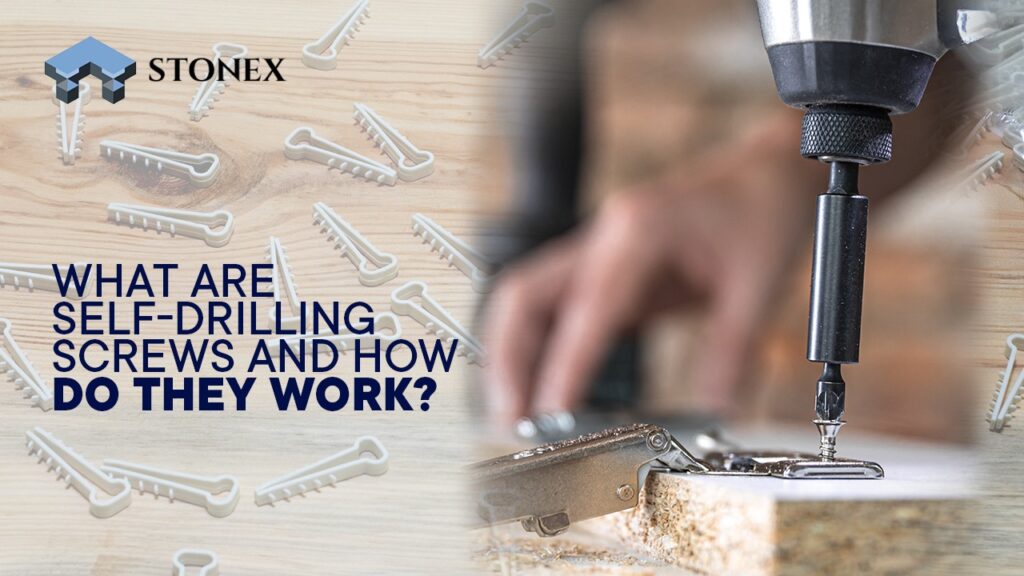
Exploring the Wonders of Self-Drilling Screws: How They Work and Where to Use Them
Introduction:
Self-drilling screws, a marvel of engineering, have revolutionized the world of fasteners. These versatile and efficient screws are designed to do more than just hold things together; they can drill their own holes as they’re being fastened. In this blog post, we will delve into the fascinating world of self-drilling screws, exploring how they work, their applications, and providing real-world examples to help you understand their importance.
Understanding the Basics: How Do Self-Drilling Screws Work?
Self-drilling screws, often referred to as self-tapping screws, are a type of fastener with a special feature: they possess a drill bit-like tip. This tip is designed to cut through materials such as metal, wood, or plastic as the screw is being driven in. Here’s how they work:
1. Drill Tip: The pointed end of the self-drilling screw features a drill tip with a cutting edge. This drill tip allows the screw to create its pilot hole as it’s turned.
2. Threads: Self-drilling screws have threads that follow the drill tip. As the screw rotates, these threads grip and pull the screw into the material.
3. Fastening: The screw continues to rotate until it’s fully seated in the material, creating a secure and tight connection.
Applications of Self-Drilling Screws:
1. Construction: Self-drilling screws are commonly used in the construction industry for attaching metal to metal or metal to wood. They are ideal for applications where traditional drilling and tapping might be time-consuming.
2. Metal Roofing: In roofing, self-drilling screws are invaluable. They can penetrate the metal roof sheets while also securing them in place. This application ensures a watertight seal and prevents leaks.
3. Furniture Assembly: DIY enthusiasts and furniture manufacturers often use self-drilling screws to quickly and securely assemble furniture pieces without the need for pre-drilling holes.
4. Automotive Industry: Self-drilling screws are found in various automotive components, from attaching body panels to securing interior trims.
5. HVAC Systems: Heating, ventilation, and air conditioning systems rely on self-drilling screws to connect ductwork and other components securely.
Examples of Self-Drilling Screws in Action:
1. Metal Stud Framing: When building metal stud walls, self-drilling screws are used to secure the studs to the tracks, simplifying the construction process.
2. Deck Construction: When fastening deck boards to the frame, self-drilling screws are efficient and ensure a secure attachment, even in outdoor environments.
3. Solar Panel Installation: The solar industry employs self-drilling screws to mount solar panels securely on roofs, reducing installation time and costs.
4. Cabinet Installation: In kitchens and bathrooms, self-drilling screws simplify cabinet installation by eliminating the need for pre-drilled holes.
Self-drilling screws are exceptionally easy to use when compared to traditional fasteners for several reasons:
1. No Pre-Drilling Required: With self-drilling screws, there’s no need to pre-drill pilot holes in the material you’re fastening. This eliminates a time-consuming step and reduces the risk of splitting wood or damaging materials.
2. Efficient Installation: Self-drilling screws combine drilling and fastening into a single step. As you turn the screw, it drills its hole and secures the material simultaneously, making the process faster and more efficient.
3. Reduced Labor and Tools: Since they eliminate the need for separate drilling and tapping tools, self-drilling screws simplify the toolset required for a project. You can achieve a strong connection using just a power drill or screwdriver.
4. Versatility: These screws can be used in a wide range of materials, including metal, wood, and plastics, making them versatile for various applications.
5. Consistent Results: Self-drilling screws provide consistent results because the drilling and fastening processes are integrated. This reduces the chances of human error and ensures a secure connection every time.
6. Cost Savings: While the initial cost of self-drilling screws may be slightly higher than traditional screws, the time and labor savings they offer can translate into significant cost savings over the course of a project.
7. DIY-Friendly: For DIY enthusiasts, self-drilling screws are user-friendly. They simplify tasks like assembling furniture, hanging shelves, or building structures, making these projects accessible to a wider audience.
In summary, self-drilling screws are easy to use because they streamline the fastening process, reduce the need for additional tools, and provide reliable results. Whether you’re a professional tradesperson or a DIY enthusiast, these screws can make your projects more efficient and enjoyable.
Conclusion:
Self-drilling screws are a remarkable innovation that has significantly improved the efficiency and convenience of fastening materials together. Their ability to create their pilot holes while fastening makes them a valuable tool in various industries, from construction to automotive manufacturing. By understanding how self-drilling screws work and where to use them, you can harness their power to simplify your own projects and achieve strong, reliable connections.
So, next time you pick up a self-drilling screw, remember the ingenuity behind this small but mighty fastener!
